

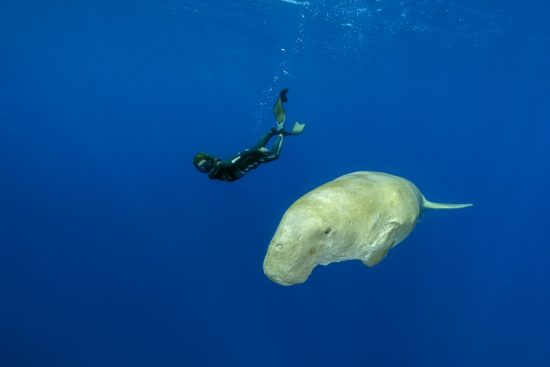

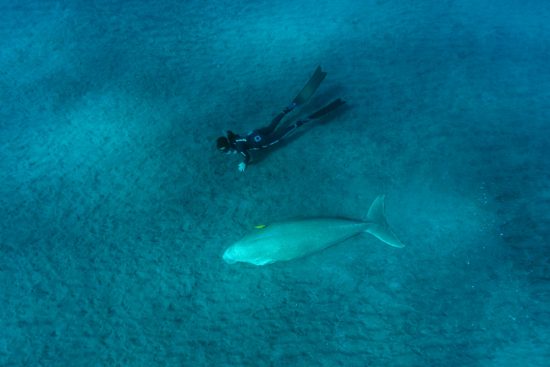
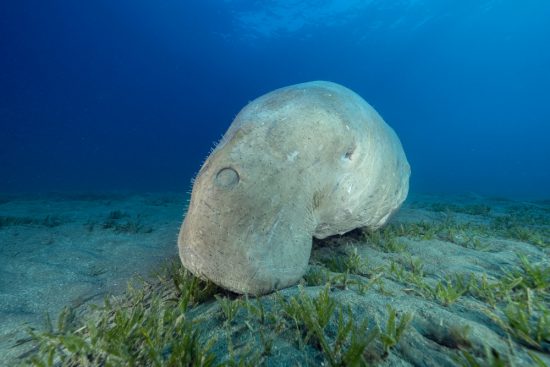
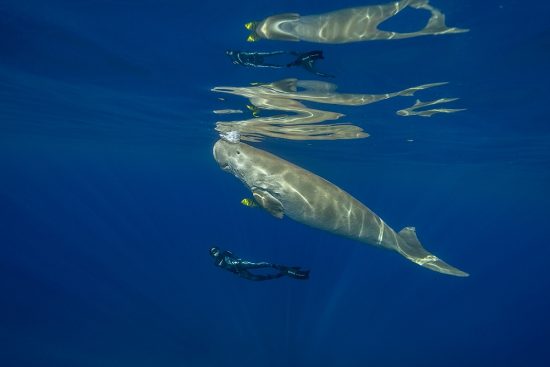
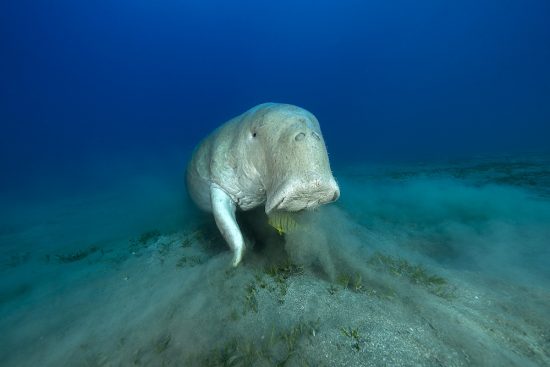
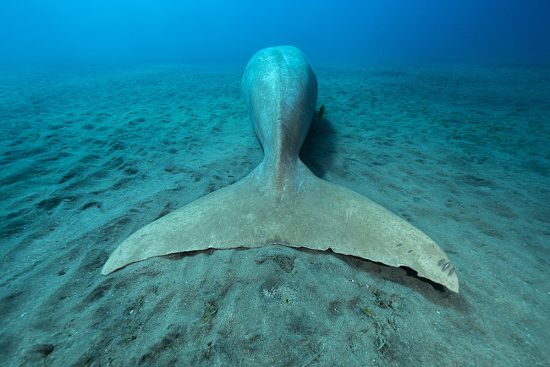
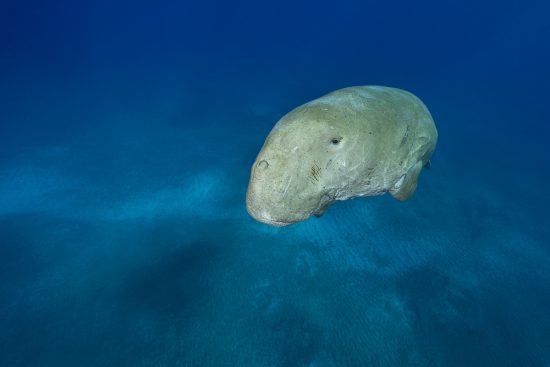
Okay then, get ready and hurry up before it's too late.
Mermaids? Are you sure? All right, well, let's look at this a little closer...
The dugong (Dugong dugon) does not have a lot of relatives except for the Manatee (Trichechus manatus), and together they are part of the Sirenia order. They are the only strictly herbivorous marine mammal, and the only group of herbivorous mammals to have become completely aquatic. I have also discovered that dugongs and other sirenians are more closely related to elephants than any other marine mammals!
The dugong is the only living representative of the once-diverse Dugongidae family. The Steller's sea cow (Hydrodamalis gigas), its closest modern relative living in the cool waters of the Bering Sea, was hunted to extinction in the 18th century.
In 2015, the IUCN classified dugongs as vulnerable to extinction worldwide due to a myriad of threats, including being caught in fishing gear or struck by boat propellers, ocean pollution and, above all, the loss of the seagrass on which they graze.
Female dugongs undergo relatively long calving intervals (two to seven years) and gestation periods (14 to 16 months), giving birth to one calf at a time (albeit with occasional twin births), and practice prolonged maternal care (with an estimated suckling period of 18 months). The interaction between these reproductive traits and their vulnerability to anthropogenic threats exacerbate this species' risk of extinction, therefore, hurry up if you want to observe this harmless large animal that is also quite rare and easily approachable with respect, calm and at due distance.
Once you succeed in earning their trust and acceptance, you will be able to swim side by side, looking directly into each other’s small eyes.
The dugong is one of the most peaceful marine mammals I have ever snorkelled with in the warm coastal waters of the Red Sea, in shallow protected bays. You need a little patience and the best equipment: I used the new Manta Steamer - Lady (a wonderful 2.2mm neoprene wetsuit, pre-shaped for the female form), my inseparable X-Wing Carbon fins (some of the most reactive long blades I have ever tried), the X-Tream mask (with a very wide field of view considering the small volume), the Dual Basic snorkel, my Belt Elastic w/Marseillaise for good trim in the water and my preferred bag, the Cruise Dry BP75: everything finds its space inside this big, light magic bag.
You will marvel at the dugong: its sweetness, its skill in avoiding boats, its patience when it swims lazily on the surface surrounded by snorkelers before taking a final breath of air and making its way downwards to the seagrass bed, the inseparable juvenile Golden trevally fish that follow them and their hunger when grazing on seagrasses, raising sand and completely ignoring me and Franco.
It does not surprise me that this harmless species is under threat of extinction, mostly because seagrass ecosystems are in danger. This is primarily a human-caused issue due to coastal urbanization, seawalls, breakwaters, dredging, overfishing, the introduction of invasive species, soil degradation and agricultural, industrial and wastewater runoff. Add climate change and problems such as water temperature, weather and rising sea levels, and you have a real picture of the situation. It is estimated that seagrass beds are declining at a rate of about 7% per year globally. If left unchecked, the destruction and death of seagrass meadows could turn vibrant ecosystems from carbon-catching sinks to carbon-releasing sources.
Seagrass ecosystems are as important as coral reef systems because they improve water quality and clarity by trapping sediment and acting as natural water filters. Their roots stabilize the shoreline and offshore soils, while their blades modulate wave action, improving coastline stability by helping to prevent erosion. They improve coastal resilience to floods and storms. As photosynthesizing primary producers, they are part of the backbone of the marine food web and nutrient cycle. In the end, they play one of the most important roles in reducing the effects of global climate change.
To discover more about our activities, don't forget to follow us on our webpage, Facebook and Instagram or to sign up for our newsletters.
 Franco and Sabrina
Franco and Sabrina 26th May 2023
26th May 2023